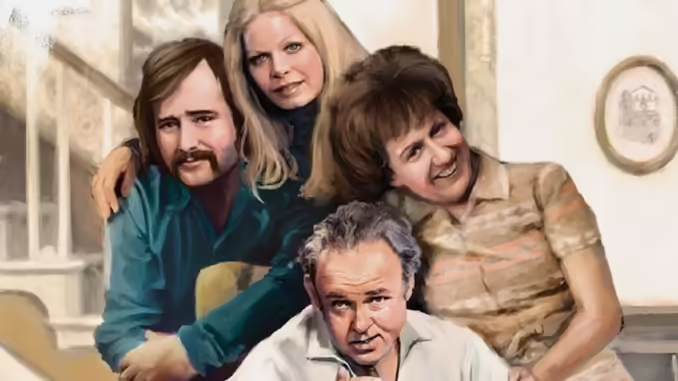
This is the introduction to LIFE’s special issue commemorating the 50th anniversary of All in the Family.
When ABC aired a remake of an All in the Family episode before a live audience in 2019, they meticulously recreated the Bunker family home in Queens, complete with doilies and faded wallpaper. Woody Harrelson and Marisa Tomei stepped into the iconic roles of Archie, the staunchly conservative dockworker, and his loving wife, Edith. Set in 1976, the episode revolves around the surprise visit of David Brewster, a draft dodger who fled to Canada during the Vietnam War, returning home just for Christmas. When Edith invites David to their holiday dinner, Mike warns him to keep his past a secret from Archie and to steer clear of discussions about “politics, religion, sex, books, movies, war, peace, guns… grapes, lettuce.”
As Archie prepares to host his friend Pinky Peterson, whose son died in the war, Mike’s worst fears come true when David’s secret is revealed, leading to an explosive confrontation over the war. Archie angrily asserts, “What he done was wrong!” Yet Pinky steps in to bridge the divide, acknowledging both men’s choices: “My kid hated the war too… if Steve was here, he would want to sit down with him.” Pinky’s handshake with David symbolizes an effort toward reconciliation.
All in the Family premiered 50 years ago in January 1971, just two years before the U.S. withdrew from Vietnam, and four years before the conflict’s end. By 1976, when the Christmas special aired, the scars of war were still fresh, with 58,000 American lives lost. Ironically, on the same day ABC restaged the episode in 2019, Congress began impeachment proceedings against President Donald Trump, reflecting the ongoing polarization in American society. Despite the passage of time, the core issues remain strikingly similar.
In the 1970s, it was audacious for a sitcom to tackle such contentious subjects as war. All in the Family broke the mold of its time, challenging the bland uniformity of television, which had been dominated by three major networks and the Public Broadcasting Service. The era’s sitcoms often featured white middle-class families and avoided political content. One of the few working-class shows prior to All in the Family was The Honeymooners, which had aired briefly in the 1950s.
Enter Archie Bunker, a loud and unapologetic representative of America’s discontent. He embodied Richard Nixon’s “Silent Majority,” articulating the frustrations of conservatives who felt marginalized. Each week, viewers watched as Archie clashed with Mike and his feminist daughter, Gloria, while interacting with the loving yet often naive Edith.
Though Archie presented as a reactionary figure, the show revealed his underlying humanity. During its nine seasons on CBS, creators Norman Lear and Bud Yorkin used All in the Family as a platform to explore pressing societal issues, weaving current events seamlessly into its narrative. The series tackled the Vietnam War, the Watergate scandal, and the widening liberal-conservative divide, addressing complex themes like race, gender, and religious beliefs.
Carroll O’Connor’s portrayal of Archie transcended stereotypes, revealing a character who was more misguided than malevolent. Lear aimed to illustrate that the roots of bigotry and intolerance lie in the hearts of ordinary people, a message that resonated deeply in the societal context.
Ultimately, All in the Family did more than achieve top ratings and numerous awards. It sparked a cultural openness that transformed television, paving the way for diverse and working-class protagonists in subsequent shows. Even after half a century, its humor and themes remain relevant, probing the enduring challenges within American families and society, and striving to capture the very essence of the nation.
Here’s a selection of images from LIFE’s special issue on All in the Family.
